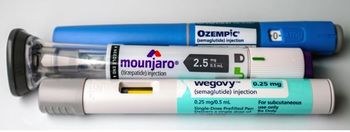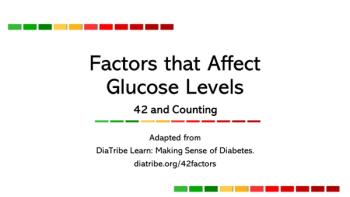
Stem Cells Tame Type 1 Diabetes in Pilot Study
RIBEIRÃO PRETO, Brazil -- In a pilot study of stem cell therapy for newly diagnosed type 1 diabetes, nearly all patients remained free of exogenous insulin for extended periods , one for as long as three years, researchers here reported.
RIBEIRO PRETO, Brazil, April 10 -- In a pilot study of stem cell therapy for newly diagnosed type 1 diabetes, nearly all patients remained free of exogenous insulin for extended periods , one for as long as three years, researchers here reported.
Among 15 patients ages 14 to 31 treated with autologous hematopoietic stem cell transplantation within six weeks of a diagnosis of type 1 diabetes, only one needed to resume insulin injections a year after the procedure, reported Jlio C. Voltarelli, M.D., Ph.D., from the University of So Paolo, and colleagues.
With a follow-up of seven to 36 months (mean, 18.8), most patients were insulin free for more than six months after stem cell therapy, Thirteen of remaining 14 had hemoglobin A1c levels below 7%, the authors reported in the April 11 issue of the Journal of the American Medical Association.
Toxicity was low with the treatment, which involved immunosuppression but not myeloablation.
"This is, to our knowledge, the first report of high-dose immunosuppression followed by autologous non-myeloablative hematopoietic stem cell transplantation for human type 1 diabetes mellitus," they wrote. "Very encouraging results were obtained in a small number of patients with early-onset disease."
The study is an example of a growing trend toward immunotherapy aimed at intercepting and, if possible, reversing the course of type 1 diabetes, commented Jay S. Skyler, M.D., of the Diabetes Research Institute at the University of Miami Miller School of Medicine, in an accompanying editorial.
"Research in this field is likely to explode in the next few years and should include randomized controlled trials as well as mechanistic studies," Dr. Skyler wrote. "As these further studies confirm and build on the results of Voltarelli et al , the time may indeed be coming for starting to reverse and prevent type 1 diabetes mellitus."
"This is a small pilot study which has pretty remarkable results," commented Gordon C. Weir, M.D, of Harvard and head of the section on islet transplantation and cell biology at the Joslin Diabetes Center, in an interview.
But Dr. Weir cautioned that the study involved only 15 patients and had relatively short follow-up. He suggested that in future studies investigators try safer, less toxic conditioning regimens than the one used by Dr. Voltarelli and colleagues.
The treatment is designed to slow or, ideally, halt the cell-mediated autoimmune assault on the insulin-secreting beta-islets cells of the pancreas.
In the Brazilian phase I/II study, the patients had all been diagnosed with type 1 disease within the previous six weeks by clinical findings, hyperglycemia, and laboratory confirmation of antibodies against glutamic acid decarboxylase.
The protocol was modified to exclude patients who had a previous episode of diabetic ketoacidosis, when the first enrolled patient developed it and remained insulin dependent after stem-cell transplantation, the authors noted. They also excluded patients who were serology-positive for HIV, hepatitis B, or hepatitis C, as well as those with underlying hematologic, renal, cardiac, hepatic, or psychiatric disease.
The main outcome measures were morbidity and mortality from transplantation, and change over time in exogenous insulin requirements, including daily dose and duration of usage. Secondary endpoints included serum levels of HbA1c, C-peptide levels during a mixed-meal tolerance test, and antiglutamic acid decarboxylase antibody titers measured before and at different times following autologous stem cell transplantation.
The patients were first treated with cyclophosphamide (Cytoxan) 2.0 g/m2) and G-CSF (10 ?g/kg per day) to mobilized the stem cells, which were then collected from peripheral blood by leukopheresis and cryopreserved. The cells were injected intravenously back into the patients after further conditioning with cyclophosphamide (200 mg/kg) and rabbit antithymocyte globulin (4.5 mg/kg).
During the mean 18.8-mongth follow-up 14 patients became insulin free, one for 35 months, four for at least 21 months, seven for at least six months, and two with late responses. One of the latter two patients was insulin-free for five months, and the other, who discontinued insulin 610 days after transplant, was insulin-free for one month.
One patient needed to resume insulin use 360 days after stem cell transplantation.
In their analysis of the secondary endpoints, the authors found that the mean total area under the curve for the C-peptide response was significantly greater than pretreatment values, and had not changed at either the 12- or 24-month follow-up intervals.
Levels of antiglutamic acid decarboxylase antibodies decreased six months after transplant in the majority of patients, and stabilized at 12 and 25 months.
The safety analysis showed one acute adverse event, a culture-negative bilateral pneumonia. Two patients had late endocrine dysfunction: one with hypothyroidism and rhabdomyolysis, and the other with hypogonadism. There were no deaths.
"The natural history of type 1 diabetes mellitus was more altered in our study than in other immunosuppression interventions because, different from those studies, 14 of 15 or 93% of our patients experienced variable periods of insulin independence and most of them maintained this status throughout the follow-up," the authors wrote.
In his editorial, Dr. Skyler noted that although C-peptide levels indicated that stem cell therapy was associated with an improvement in beta-cell function, the study results are limited by the lack of randomization, relatively short follow-up, and the "honeymoon period" of relative remission after the onset of type 1 diabetes that could confound the results.
In addition, "it is not known whether the putative beneficial effects of autologous hematopoietic stem cell transplantation are due to immune reconstitution or otherwise altering the immune-mediated beta-cell destruction that eventuates in the type 1 diabetes mellitus disease process or to regeneration of beta cells."
Newsletter
Enhance your clinical practice with the Patient Care newsletter, offering the latest evidence-based guidelines, diagnostic insights, and treatment strategies for primary care physicians.






























































































































































































































































































